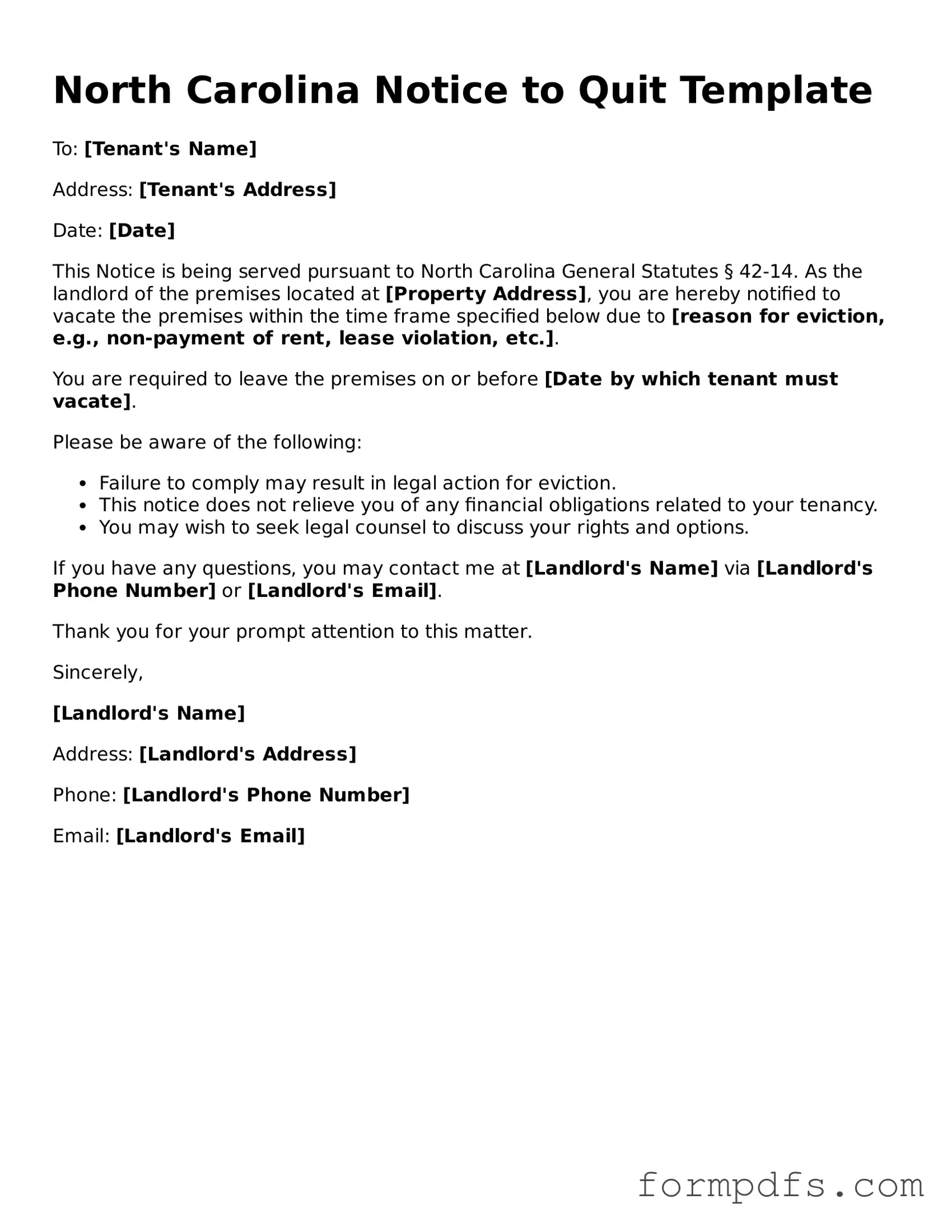What is a Notice to Quit in North Carolina?
A Notice to Quit is a formal document that a landlord provides to a tenant to request that they vacate the rental property. This notice is often used when a tenant has violated the terms of their lease or has not paid rent. It serves as a legal way to initiate the eviction process, giving the tenant a specified amount of time to leave the premises before further legal action is taken.
How much notice must a landlord give before filing for eviction?
In North Carolina, the amount of notice required can vary based on the reason for the eviction. Generally, for non-payment of rent, a landlord must provide a tenant with a 10-day notice to quit. If the eviction is due to a lease violation, the notice period can be as short as 7 days. Always check the specific terms of the lease and any local laws, as they may influence the notice period.
Can a tenant contest a Notice to Quit?
Yes, a tenant has the right to contest a Notice to Quit. If a tenant believes the notice is unjust or that they have rectified the issue (like paying overdue rent), they can respond to the landlord. It’s often beneficial for tenants to communicate openly with their landlords to resolve any disputes before the situation escalates to court.
What happens if a tenant does not comply with the Notice to Quit?
If a tenant does not vacate the property by the deadline specified in the Notice to Quit, the landlord can proceed with filing an eviction lawsuit in court. This process can lead to a formal eviction, where a judge may order the tenant to leave the property. It's crucial for tenants to understand their rights during this process and consider seeking legal advice if they find themselves facing eviction.
Is a Notice to Quit the same as an eviction notice?
While a Notice to Quit is often the first step in the eviction process, it is not the same as an eviction notice. The Notice to Quit informs the tenant that they must vacate the property, while an eviction notice typically follows if the tenant does not comply. An eviction notice is issued after legal proceedings have begun and can lead to a court-ordered eviction.
